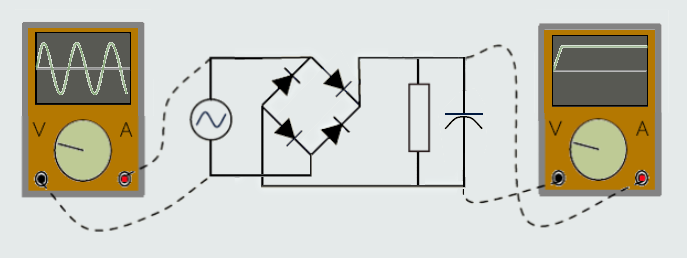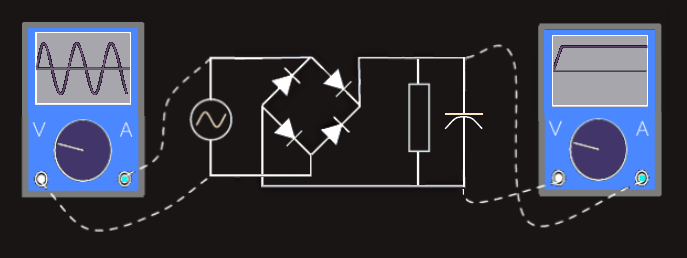Microprocessor Technology
Before we go any further, we will here make some review and introduction of electronic fundamentals, needed to completely understand what's going on inside computer, then we will start focusing on some of the specifics of what makes a computer operate, centered around the processor, which are made of millions of tiny semiconductor transistors today. So before we can get too far into our study of processors we need to take a look at the building blocks of those transistors, starting with the study of semiconductors.
We have seen earlier that resistor represents the friction component. The inductor and the capacitors represent the ability to take kinetic energy, in the form of electrical current, and store it as potential energy. In the capacitor, the potential energy is stored in an electric field. In the inductor, it’s stored in a magnetic field. The stored potential energy can then later be released back into electrical energy.
Making the mechanical comparison, energy is utilized either in kinetic (moving) form or potential form. For example, a spring at rest has no energy. As we push the ends of a spring together, we are putting kinetic energy into the spring. Once we have the spring completely compressed, it now has stopped moving and the energy is now in its potential form. Once we release the spring, the potential energy converts back to kinetic energy and the spring expands. Over time, some of the energy is lost by friction. The spring may lose some of its energy via friction to the air, to our hands, and to anything else it comes into contact with.
The Power Supply
All of the electronics inside of the computer (or most other consumer electronics) depend on the power supply. The power supply is responsible for converting, managing, and maintaining the power requirements of the machine.
Most consumer electronics make use of DC to provide power to their internal components. They need DC power because they rely on a constant flow of power in order to maintain the state they are operating in. Since AC power is constantly switching on and off it’s not suitable for powering many devices.
We already know that electrical power is distributed to end locations via AC. This presents a slight problem, and we must create DC from AC.
To create DC from AC, it must go through a conversion process known as rectification that converts AC into DC. In order to rectify, we need a new component - a diode.
Diodes
A diode is an electrical component that allows current to flow in only one direction. 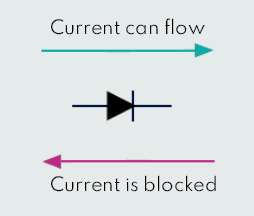
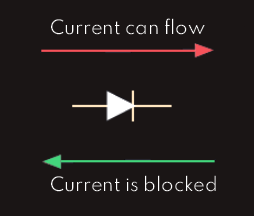
Half Wave Rectifier
The most basic diode rectifier is called a half-wave rectifier. In a half wave rectifier, current can only flow in one direction, so we can only produce a voltage in one direction. When the source voltage is positive, current can flow in the circuit and create a positive voltage on the resistor. When the source voltage goes negative, no current flows (the diode acts like an open circuit) and thus there is no voltage across the resistor. 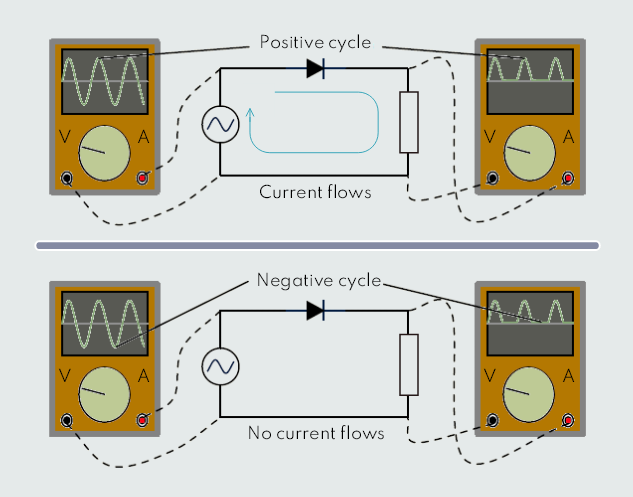
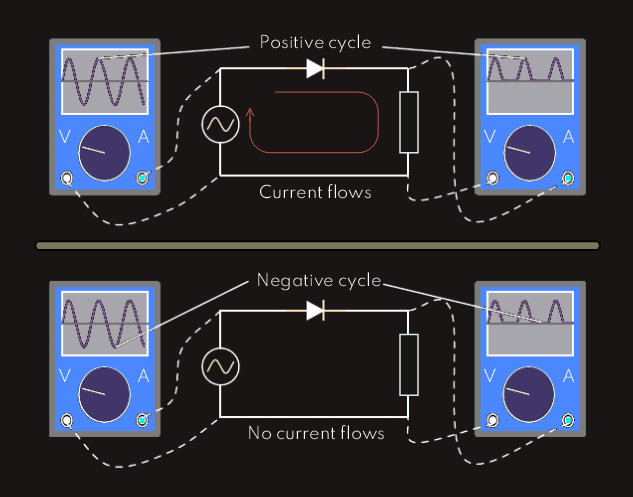
Full Wave Rectifier
Analyzing the idea of half wave rectifier further, we can create a full-wave rectifier. This circuit is made up of four diodes in a bridge configuration, which allows current to flow in alternating pairs of the diodes. 

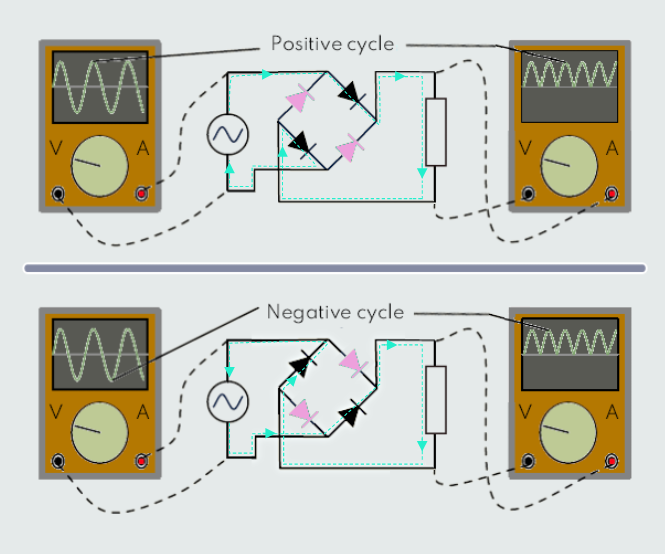
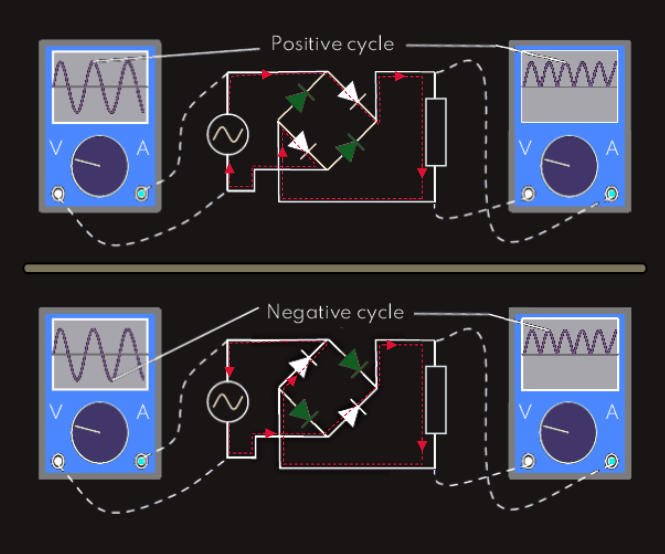
By removing the negative part of the AC voltage we’ve created a new voltage that, over time, has a positive average value. In effect, we’ve created a DC voltage that fluctuates. The amount of fluctuation is known as the ripple voltage.
Full wave rectifier can even be better with adding a capacitor at the output, parallel to the resistor.
The capacitor attempts to maintain a constant voltage. It does this by storing charge inside of itself, and when the voltage starts to change it uses this excess charge to try and make up for the difference - keeping the voltage constant. We can think of it like a little battery that doesn’t have a very long life. However, before the capacitor loses all of its stored charge, the source voltage waveform returns and the capacitor is recharged again.
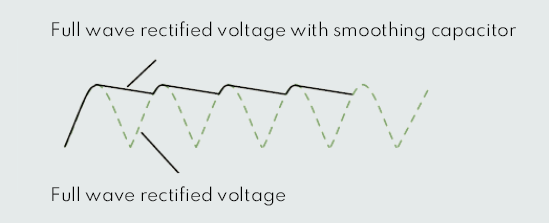
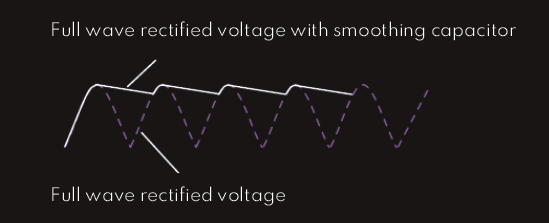
Remember that opening up a computer power supply while it’s still plugged in the wall socket is a very dangerous idea.
However, just unplugging the power supply doesn’t make it safe. The capacitors that help smooth the DC voltages retain charge even after the power has been disconnected. Capacitors do slowly discharge and depending on their capacitance this discharging can take anywhere from milliseconds to minutes.
As shown above, there is still some small ripple in the output voltage. However, it is significantly less than without the smoothing capacitor. 